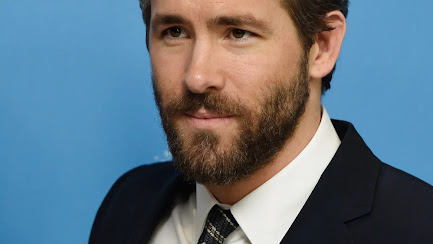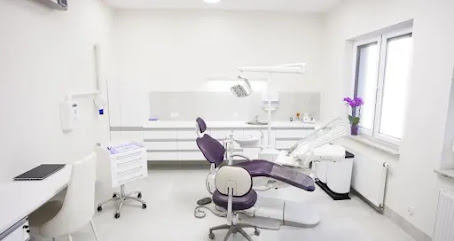Beard Transplant in Turkey
Beard Transplant in Turkey have gained popularity among men who desire a fuller and more masculine appearance. While genetics, health conditions, or scarring may prevent some individuals from growing a beard naturally, advancements in medical technology have made it possible to achieve the desired facial hair through beard transplant procedures. One country that has emerged as a leading destination for beard transplants is Turkey. In this article, we will explore why Turkey has become a preferred choice for individuals seeking a beard transplant and delve into the procedure, benefits, aftercare, cost, and more.
What is a Beard Transplant in Turkey?
A beard transplant is a surgical procedure that involves the transplantation of hair follicles from a donor area, typically the back of the scalp, to the beard area. This procedure is performed under local anesthesia, ensuring minimal discomfort for the patient. The transplanted hair follicles grow naturally and provide a permanent solution for individuals looking to enhance their facial hair.
Why Choose Turkey for a Beard Transplant?
Turkey has gained a well-deserved reputation as a top destination for various cosmetic procedures, including beard transplants. There are several reasons why individuals choose Turkey for their beard transplant:
Affordability: Turkey offers competitive prices for beard transplants compared to many other countries, making it a cost-effective option for individuals seeking this procedure.
Expertise and Experience: Turkish clinics and surgeons have extensive experience in performing beard transplants, with many having successfully treated numerous patients. They possess the necessary expertise and skills to deliver excellent results.
Advanced Facilities: Turkey boasts state-of-the-art medical facilities equipped with the latest technology and equipment for performing beard transplants. These facilities adhere to international standards and prioritize patient safety.
High Success Rates: Turkey's clinics have achieved high success rates in beard transplant procedures. The combination of skilled surgeons, advanced techniques, and meticulous attention to detail ensures satisfactory outcomes for patients.
The Benefits of Beard Transplant in Turkey
Undergoing a beard transplant in Turkey offers several benefits:
Natural and Full Beard: Beard transplants in Turkey provide individuals with a natural-looking and full beard that enhances their facial appearance. The transplanted hair follicles are carefully placed to mimic the natural growth pattern, resulting in an aesthetically pleasing beard.
Boost in Confidence: For men who have struggled with patchy or thin facial hair, a beard transplant can significantly boost self-confidence. A fuller beard can transform the way a person looks and feels, instilling a sense of masculinity and attractiveness.
Permanent Solution: Unlike temporary solutions such as beard implants or topical products, a beard transplant offers a permanent solution. The transplanted hair follicles continue to grow naturally, ensuring long-lasting results.
Minimal Downtime: Beard transplant procedures in Turkey are performed on an outpatient basis, allowing patients to resume their daily activities shortly after the procedure. This minimal downtime makes it a convenient option for individuals with busy schedules.
Procedure and Techniques
The procedure for a beard transplant typically involves the following steps:
Consultation: A thorough consultation with a skilled surgeon is essential to discuss the patient's goals, assess the donor area, and determine the number of grafts required for the transplant.
Donor Hair Extraction: The surgeon extracts healthy hair follicles, typically from the back of the scalp, using advanced techniques such as follicular unit extraction (FUE) or direct hair implantation (DHI).
Recipient Site Creation: The surgeon creates tiny incisions in the beard area where the hair follicles will be transplanted. These incisions are strategically made to ensure a natural-looking result.
Graft Placement: The extracted hair follicles are carefully placed into the recipient sites, taking into consideration the desired density and natural beard growth pattern.
Finding the Right Clinic
When considering a beard transplant in Turkey, it is crucial to choose the right clinic. Here are some factors to consider:
Reputation: Research the clinic's reputation by reading patient reviews and testimonials. Look for clinics with positive feedback and a track record of successful beard transplant procedures.
Experience and Expertise: Ensure that the clinic has experienced surgeons who specialize in beard transplants. Check their qualifications, certifications, and before-and-after photos of previous patients.
Facilities and Technology: Visit the clinic's website or contact them directly to inquire about their facilities and the technology they use. Opt for clinics that prioritize patient safety and offer state-of-the-art equipment.
Personalized Consultation: A reputable clinic will provide a personalized consultation where the surgeon assesses your specific needs and expectations. This consultation should include a detailed explanation of the procedure, potential risks, and expected results.
Preparing for a Beard Transplant
To ensure optimal results and a smooth recovery, it is important to follow the pre-operative instructions provided by your surgeon. These may include:
Avoiding Blood-Thinning Medications: Your surgeon may advise you to refrain from taking blood-thinning medications or supplements that could increase the risk of bleeding during the procedure.
Quitting Smoking: Smoking can impair the healing process and affect the success of the transplant. It is recommended to quit smoking at least a few weeks before the procedure.
Healthy Lifestyle: Maintaining a healthy diet, staying hydrated, and getting sufficient rest can contribute to a successful beard transplant procedure.
The Beard Transplant Process
On the day of the beard transplant, you can expect the following steps:
Preparation: The surgical team will prepare the donor area and the beard area for the procedure. You will be given local anesthesia to ensure your comfort throughout the process.
Extraction and Placement: The surgeon will extract the hair follicles from the donor area and meticulously place them into the recipient sites in the beard area. The process requires precision and artistry to achieve a natural-looking result.
Post-Procedure Instructions: After the transplant, the surgeon will provide you with post-operative instructions regarding medication, washing the transplanted area, and any other necessary care instructions.
Aftercare and Recovery
Proper aftercare is crucial for a successful recovery and optimal results. Here are some general aftercare guidelines:
Medication and Care: Follow your surgeon's instructions regarding medication, cleaning the transplanted area, and any specific care guidelines.
Avoiding Physical Strain: Avoid strenuous physical activities, especially those that may put pressure on the transplanted area, for a few weeks after the procedure.
Protecting the Transplanted Area: It is important to protect the transplanted area from direct sunlight, extreme temperatures, and any potential trauma during the healing process.
Results and Expectations
The results of a beard transplant become more apparent as the transplanted hair follicles go through their natural growth cycles. It is important to note that the initial transplanted hair will shed within a few weeks, but new hair will start to grow in its place. Full results are typically visible within several months, and the beard will continue to improve in density and appearance over time.
Cost of Beard Transplant in Turkey
The cost of a beard transplant in Turkey can vary depending on several factors, including the number of grafts required, the clinic's reputation, and the surgeon's expertise. Generally, the cost in Turkey is more affordable compared to many other countries, making it an attractive option for individuals seeking a beard transplant.
Patient Testimonials
Many individuals who have undergone a beard transplant in Turkey have shared positive experiences and satisfaction with their results. These testimonials often highlight the natural appearance, increased confidence, and overall positive impact the procedure has had on their lives.
Frequently Asked Questions
Is a beard transplant a painful procedure? A beard transplant is performed under local anesthesia, ensuring minimal discomfort during the procedure. Patients may experience some mild discomfort or soreness in the days following the transplant, but this can be managed with pain medication prescribed by the surgeon.
Are the results of a beard transplant permanent? Yes, the results of a beard transplant are permanent. The transplanted hair follicles are resistant to balding and will continue to grow naturally for a lifetime.
When can I expect to see the final results of the beard transplant? The initial transplanted hair will shed within a few weeks, but new hair growth will begin within a few months. Full results, including optimal density and appearance, are typically visible within several months to a year after the procedure.
Beard Transplant in Turkey
Beard transplant in Turkey have gained popularity as a safe, effective, and cost-efficient solution for individuals looking to enhance their facial appearance. With a skilled surgeon, state-of-the-art facilities, and high success rates, Turkey has become a preferred destination for those seeking a fuller and more masculine beard. By undergoing a beard transplant in Turkey, individuals can achieve natural-looking, permanent results that boost their confidence and provide a lasting solution to their beard concerns.



